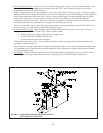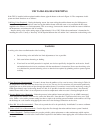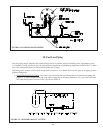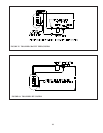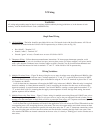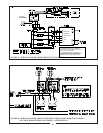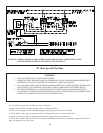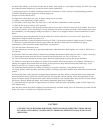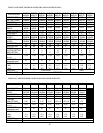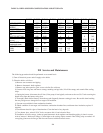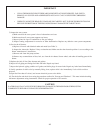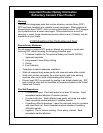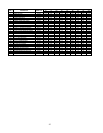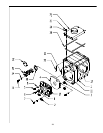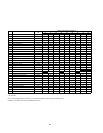
23
6) Check initial settings of oil burner air band and air shutter, head setting etc., and readjust if needed. See Table 3 for setup
and combustion data pertaining to a particular boiler/ burner combination.
7) Attach plastic hose to oil pump vent fitting and provide a container to catch oil during oil pump bleeding procedure.
8) Install 0-200 PSI pressure gauge into oil pump gauge port.
9) Open all oil line shutoff valves.
10) Open flame observation port cover on burner swing door to see flame.
11) Adjust system thermostat to highest setting.
12) Set boiler controls (high limit, low limit, etc.) to suit individual requirements of the installation.
13) Turn the line service switch to “ON” position.
14) Crack open vent fitting on the oil pump and allow burner to run until a solid oil stream, free of air bubbles, flows for 15
seconds into container. As the vent fitting is closed, the burner should fire and flame should be visible through observation
port immediately (or after prepurge timing has expired, if a burner is so equipped). Refer to burner instructions for more
details.
15) Immediately upon firing the boiler, check the smoke level. If the smoke level is in excess of a #1, open the air
adjustment to bring the smoke level below a #1.
16) Make sure that the oil pressure matches that shown in Table 3 for the burner supplied. Adjust pressure if required.
17) Check the vacuum at the inlet of the fuel pump. Make sure that the vacuum does not exceed the fuel pump
manufacturer’s limit (consult the pump manufacturer’s instructions).
18) Close the flame observation cover.
19) After chimney has warmed-up to operating temperature, adjust barometric draft regulator for a draft of -0.02 inch w. c.
over the fire.
20) Check the CO2 and confirm that it is between the minimum and maximum limits shown in Table 3. Adjust if necessary.
21) Verify that the smoke level still does not exceed #1 and that the draft over fire is -0.02 inch w.c.
22) Turn off the burner and remove pressure gauge. Install and tighten gauge port plug, then restart the burner.
23) Check for clean cutoff of the burner. Air in the oil line between fuel pump and nozzle will compress, while burner is
running, and expand, when burner shuts off, causing oil line pressure to drop and nozzle drip after burner stops. Cycle
burner on and off 5 to 10 times to purge air completely.
24) Check thermostat operation by raising or lowering its set point as required, cycling burner on and off.
25) Verify primary control operation and safety features according to procedure outlined in the instructions furnished with
control.
26) Check high limit control operation. Jump thermostat terminals and allow burner to run until boiler water temperature
exceeds high limit setting. The burner should shut down, and circulator continue running. Allow the temperature to drop
below the control setting. The burner must restart. Boiler installation is not complete unless these checks are made and are
satisfactory. Remove thermostat jumper and reconnect thermostat upon check completion.
27) After the boiler has operated for approximately 30 minutes, check the boiler and heating system for leaks. Repair any
leaks found at once.
After the above checks have been completed, leave thermostat(s) at desired setting. Leave all instructions provided with the
boiler with owner or in boiler room, displayed near boiler.
CAUTION
ATTEMPTS TO USE BURNERS OR BURNER CONFIGURATIONS OTHER THAN THOSE SHOWN
IN TABLE 3 COULD RESULT IN RELIABILITY PROBLEMS, PROPERTY DAMAGE OR UNSAFE
OPERATION.
22



